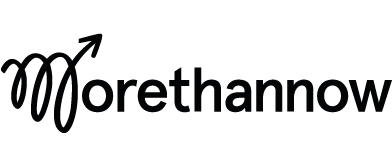The Inclusion Audit.
Unconscious bias has a toxic influence in the workplace. Training raises awareness but does little to change behaviour. What’s a responsible employer to do?
The Inclusion Lab
Our Inclusion Lab matches the engaging, educational side of unconscious bias training. But it goes further, allowing employees to co-create interventions and identify ways to test their impact. The Lab is facilitated by behavioural scientists and designed to be an open and enjoyable learning experience, as well as an effective, honest alternative to traditional training.
The Inclusion Audit
Our Inclusion Audit is its laser-focused little sister - used when a specific problem has already been identified and demands rapid attention:
‘Our female senior managers are not applying to our leadership roles’
‘Our People Analytics team has identified BAME candidates face adverse impact at interview stage’.
‘We’re worried our performance and pay decisions are made on instinct and gut feel’.
‘We need to attract more women to our technology division, AND they face adverse impact during CV screening’.
The Inclusion Audit helps leaders make sense of their challenge and creates a platform for effective action. It validates and defines the problem, identifies vulnerabilities to bias in the decision-making context, and presents a series of recommendations in response. The below is our three step process - built on the principle of changing contexts over changing minds:
1- We gather internal evidence about the problem, and map the context in which it occurs.
The information we require is often readily available to our clients. It includes:
Quantitative Organisational Data.
We gather existing and relevant organisational data, whether application rates, interview pass rates, performance or retention rates, split by demographic.
Qualitative Stakeholder Data
We conduct interviews with a small number of HR leaders and process owners, to gain their insight into the challenge and map the context of the decision at hand.
Decision-Making Environment and Materials
We gather all the materials that support that context. It might be the branding or job descriptions used to attract candidates, the assessment criteria used to judge performance, and an overview of the process mangers go through to make their people decisions. These are the elements we are likely to amend to reduce the effect of bias.
2- We connect our findings to behavioural insight and empirical evidence.
Our next task is to connect internal evidence with academic literature:
We identify the ways in which the context we’ve mapped is vulnerable to bias, and we show how each vulnerability has resulted in discriminatory decision-making in similar contexts (using empirical research).
We identify the ways this bias can be reduced, and use our insight to design bespoke interventions.
You can explore some examples in this article on fairer and more effective hiring.
3- We co-create a report and recommendation for next steps.
Whether working on promotion, performance, pay or hiring decisions, we provide a report on our findings, jam-packed with behavioural insight and recommendations for improvement. Simply presenting this to senior leaders is a brilliant way to illustrate the scale of the challenge ahead.
Our priority, however, is effective action. And for that, we need to work hand-in-hand with our clients. The beauty of our recommendations is often in their simplicity but they still need to be prioritised by cost and feasibility, before being robustly tested in-context. Our Inclusion Audit concludes with a co-created, evidence-based roadmap for the months ahead:
Here’s what we’re doing to address our problem and the evidence that explains why.
This is how we’ll prove our return…
NB: The Inclusion Audit is designed to remove bias from formal decision-making processes like promotion and hiring, and therefore does not address the many day-to-day challenges faced by underrepresented employees. The approach we have outlined is not an alternative to broader cultural or employee support initiatives, but remains an essential part of effective inclusion strategy.

